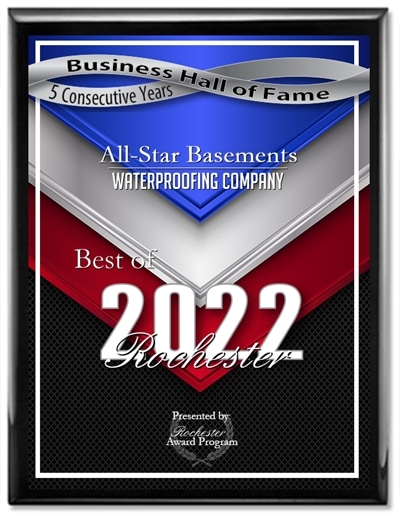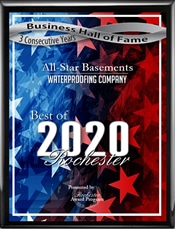Crawlspaces are often out of sight, out of mind, but they play a crucial role in maintaining the structural integrity of your home and the health of its occupants. Moisture in crawlspaces can lead to significant issues, including mold growth, wood rot, pest infestations, and compromised indoor air quality. Waterproofing your crawlspace is essential to prevent these problems and ensure the longevity of your home. In this article, we’ll explore various strategies for crawlspace waterproofing, helping you make informed decisions to protect your property.
Understanding Crawlspace Moisture Problems
Before implementing any waterproofing strategies, it’s important to understand the underlying causes of moisture problems in crawlspaces:
- High Humidity Levels: Crawlspaces, particularly those in humid climates, often suffer from high humidity due to limited ventilation and proximity to the ground. This moisture can condense on cooler surfaces, leading to mold growth, wood rot, and mildew.
- Groundwater Seepage: Water can seep into the crawlspace from the soil, especially in areas with a high water table or poor drainage around the foundation. This seepage can create a damp environment that fosters mold growth and structural decay.
- Poor Drainage: Inadequate drainage systems around the foundation can allow water to accumulate near the crawlspace, increasing the risk of water intrusion. Rainwater and runoff that are not properly directed away from the home can exacerbate this issue.
- Vented Crawlspaces: Older homes often have vented crawlspaces designed to promote air circulation. However, in humid climates, these vents can actually introduce more moisture into the crawlspace, worsening the problem.
Interior Crawlspace Waterproofing Methods
Interior waterproofing methods focus on managing moisture that has already entered the crawlspace. These solutions are often used in conjunction with exterior methods for optimal effectiveness.
- Crawlspace Encapsulation
- Vapor Barrier Installation: Encapsulation involves sealing the crawlspace with a vapor barrier, typically made of heavy-duty polyethylene sheets. This barrier is applied to the floor, walls, and sometimes the ceiling of the crawlspace, creating a continuous seal that prevents moisture from entering. Encapsulation is one of the most effective ways to control humidity and protect against water intrusion.

- Sealing Vents and Gaps: During encapsulation, any vents, gaps, or openings that allow outside air to enter the crawlspace are sealed. This helps to maintain a controlled environment within the crawlspace, reducing the risk of moisture buildup.
- Vapor Barrier Installation: Encapsulation involves sealing the crawlspace with a vapor barrier, typically made of heavy-duty polyethylene sheets. This barrier is applied to the floor, walls, and sometimes the ceiling of the crawlspace, creating a continuous seal that prevents moisture from entering. Encapsulation is one of the most effective ways to control humidity and protect against water intrusion.
- Dehumidification
- Crawlspace Dehumidifiers: Installing a dehumidifier in the crawlspace can help control humidity levels, preventing condensation and reducing the likelihood of mold growth. Dehumidifiers are particularly useful in regions with high ambient humidity.
- Monitoring Humidity Levels: It’s important to monitor the humidity levels in your crawlspace regularly. Maintaining a humidity level below 60% is generally recommended to prevent mold growth and protect structural materials.
- Drainage Systems
- Interior French Drains: Installing an interior French drain along the perimeter of the crawlspace floor can help manage water that enters the space. This system channels water to a sump pump, which then removes it from the crawlspace.
- Sump Pumps: A sump pump is a critical component of any interior drainage system. It collects water from the French drain and pumps it out of the crawlspace, preventing it from pooling and causing damage.
- Mold and Mildew Prevention
- Antimicrobial Treatments: Applying antimicrobial treatments to crawlspace surfaces can help prevent mold and mildew growth. These treatments are typically used after a thorough cleaning and before encapsulation to provide an additional layer of protection.
- Regular Inspections: Regularly inspecting your crawlspace for signs of mold, mildew, or moisture is essential for early detection and intervention. Addressing these issues promptly can prevent more significant problems down the line.
Exterior Crawlspace Waterproofing Methods
Exterior waterproofing methods are designed to prevent water from entering the crawlspace in the first place. These solutions are often more comprehensive and can provide long-term protection against water intrusion.
- Proper Grading and Landscaping
- Grading the Soil: The ground around your home should slope away from the foundation to direct water away from the crawlspace. A slope of at least 6 inches over 10 feet is recommended to ensure effective drainage.
- Landscaping Considerations: Landscaping can significantly impact crawlspace moisture levels. Ensure that plants, trees, and shrubs are planted at least a few feet away from the foundation to prevent root systems from disturbing drainage systems and contributing to moisture problems.
- Exterior Drainage Systems
- Exterior French Drains: An exterior French drain is installed around the perimeter of the foundation to intercept and redirect water away from the crawlspace. This system involves digging a trench around the foundation, installing a perforated pipe, and covering it with gravel to facilitate water flow away from the home.
- Downspout Extensions: Extending downspouts away from the foundation is a simple yet effective way to prevent water from pooling near the crawlspace. Ideally, downspouts should discharge water at least 4-6 feet away from the foundation.
- Gutter Maintenance: Keeping gutters clean and in good repair is essential for preventing water from overflowing and pooling near the foundation. Regular maintenance can prevent blockages that could lead to water damage.
- Waterproofing Membranes
- Exterior Membranes: Applying a waterproof membrane to the exterior walls of the foundation can provide a durable barrier against water intrusion. These membranes are typically made of asphalt-modified polyurethane or rubberized asphalt and are highly effective in preventing water from seeping into the crawlspace.
- Bentonite Sheets: Bentonite clay sheets can be applied to the exterior foundation walls as an additional waterproofing measure. When exposed to moisture, the bentonite clay expands, forming a watertight barrier that prevents water from entering the crawlspace.
- Foundation Coatings
- Cementitious Coatings: Cement-based waterproofing coatings can be applied to the exterior foundation walls to create a durable, water-resistant barrier. These coatings are effective in sealing small cracks and preventing water penetration.
- Bituminous Coatings: Bituminous or asphalt-based coatings are another option for waterproofing the exterior of foundation walls. These coatings provide a thick, protective layer that prevents water from seeping into the crawlspace.
Combination Waterproofing Systems
In many cases, a combination of interior and exterior waterproofing methods provides the most effective protection for crawlspaces. By addressing moisture from both inside and outside the home, you can create a comprehensive barrier that prevents water intrusion and maintains a dry, healthy environment.
- Encapsulation and Exterior Drainage: Combining crawlspace encapsulation with an exterior drainage system like a French drain ensures that water is kept out of the crawlspace and any residual moisture is effectively managed.
- Dehumidification and Grading: Using a dehumidifier in conjunction with proper grading around the home can help maintain optimal humidity levels in the crawlspace while preventing surface water from entering the area.
- Waterproof Membrane and Sump Pump: Applying a waterproof membrane to the exterior foundation walls and installing a sump pump inside the crawlspace can provide dual protection against water intrusion.
Signs That Your Crawlspace Needs Waterproofing
It’s essential to recognize the signs that indicate your crawlspace may require waterproofing. Early intervention can prevent costly damage and maintain the integrity of your home. Common signs include:

- Damp or Musty Odors: A persistent musty smell in the crawlspace or throughout the home often indicates moisture problems. This odor is usually a sign of mold or mildew growth.
- Visible Water Stains or Puddles: Water stains on crawlspace walls or standing water on the floor are clear indicators of water intrusion that needs to be addressed immediately.
- Mold or Mildew Growth: The presence of mold or mildew in the crawlspace is a sign of excessive moisture. Mold can spread quickly and pose health risks, making it crucial to address the underlying moisture problem.
- Sagging or Warped Floors: Moisture in the crawlspace can lead to wood rot, causing floors above to sag or warp. This structural damage requires prompt attention to prevent further deterioration.
- Pest Infestations: Crawlspaces that are damp or have standing water are more likely to attract pests such as termites, rodents, and insects. These pests can cause significant damage to the home’s structure.
Crawlspace waterproofing is a critical aspect of home maintenance that can protect your property from water damage, improve indoor air quality, and prevent structural issues. By understanding the various waterproofing methods available—both interior and exterior—homeowners can make informed decisions to safeguard their crawlspaces. Whether you choose to encapsulate the crawlspace, install drainage systems, or apply exterior waterproofing measures, taking proactive steps will ensure a dry, healthy, and safe living environment for your home.
Contact the Professionals at All-Star Basements Today! 507-259-7776

All-Star Basements is Locally Owned and Operated and based out of Rochester, Minnesota. We cover Southern Minnesota including the Twin Cities area, Western Wisconsin and parts of Northeast Iowa. Our team is committed to solving our customers’ basement waterproofing, foundation repair, or crawl space needs and offering multiple solutions to choose from.
As a proud member of the Basement Health Association and the National Waterproof Members of America, we have the best products available to solve your leaky basement, seepage, or flooding issues. Our lineup also includes multiple crawl space solutions.
If you have foundation problems that need any kind of repair, we can help! We feature the nationally renowned Grip-Tite Foundation Systems, which has a long history over 90 years of fixing homeowners’ foundation repair issues- from walls that are buckled, tipping or cracked and bowing.
At All-Star Basements, we are committed to providing multiple solutions to choose from to help fix any basement problem you may have. We are very proud of our Better Business Bureau A+ rating and take great pride in caring for all of our customers’ needs- big or small, we do it all!





















